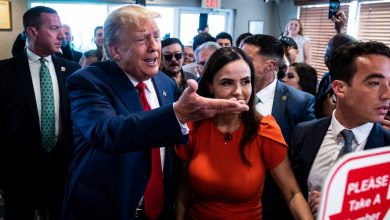A Comparison of the Classified Records Cases of Trump and Clinton

The use of classified information by public officials has been a significant political issue in recent years. The cases of former Secretary of State Hillary Clinton, and former President Donald Trump, have gained a lot of attention for their handling of classified information.
Trump’s Classified Records
Former President Donald Trump’s record with classified information has been an object of concern throughout his presidency. According to reports, Trump disclosed classified information to Russian officials in the Oval Office during a meeting in May 2017. The classified information was reportedly received from Israeli intelligence and related to an Iranian plot. The President was criticized for revealing sensitive information without authorization.
In addition, President Trump also classified transcripts of several phone calls between him and world leaders, including those with Mexico’s Enrique Pena Nieto and Australia’s Malcolm Turnbull. The transcripts revealed details of confidential talks, which showed the President in an unflattering light and called into question his judgment in diplomacy. The disclosure of the audio was done without proper approval, and its classification made it difficult for the public and other officials to evaluate the President’s conduct.
Clinton’s Classified Records
The case of former Secretary of State Hillary Clinton is another notable example of poor handling of classified documents. The controversy surrounding Clinton began in 2015 when it was revealed that she used a private email server during her tenure as Secretary of State. The use of a private server posed a significant security risk, as it was not maintained by the State Department, and the email address was not subject to proper security protocols.
As part of her duties as Secretary of State, Clinton also received and sent classified information through her private server. Later investigations concluded that out of the more than 30,000 emails she sent, 110 contained classified information, and eight contained information designated as top secret. The FBI’s investigation into Clinton’s emails concluded that although she acted “incredibly recklessly,” no charges were a warrant as she did not have appropriate intent.
Differences Between the Two Cases
The cases involving Trump and Clinton are similar in that they both highlight the risks of handling classified information poorly. However, there are significant differences between the two cases that are worth noting.
The President’s power to classify information sets him apart from Clinton. As the head of the nation’s executive branch and commander-in-chief of its military, he is responsible for safeguarding national security. So, his careless handling of classified information risks jeopardizing national security.
In contrast, Clinton was not the President, and her work as Secretary of State was limited to specific matters. Also, she did not have authority over the classification of information she received or sent. Her case, however, raises questions about the proper handling of digital communication in government and how personal systems can pose a security risk since they are private, and their security cannot be assured.
Conclusion
In conclusion, both the Trump and Clinton cases underscore the importance of keeping classified information safe and secure. They also highlight the different challenges involved with securing classified information and the responsibility that comes with being a public official. The President’s case shows how a lack of care can imperil national security, while Clinton’s case shows how insufficient systems can harm the confidentiality and integrity of information that needs to be protected. As such, there are crucial lessons to be learned from these cases to ensure that classified data is not compromised.




